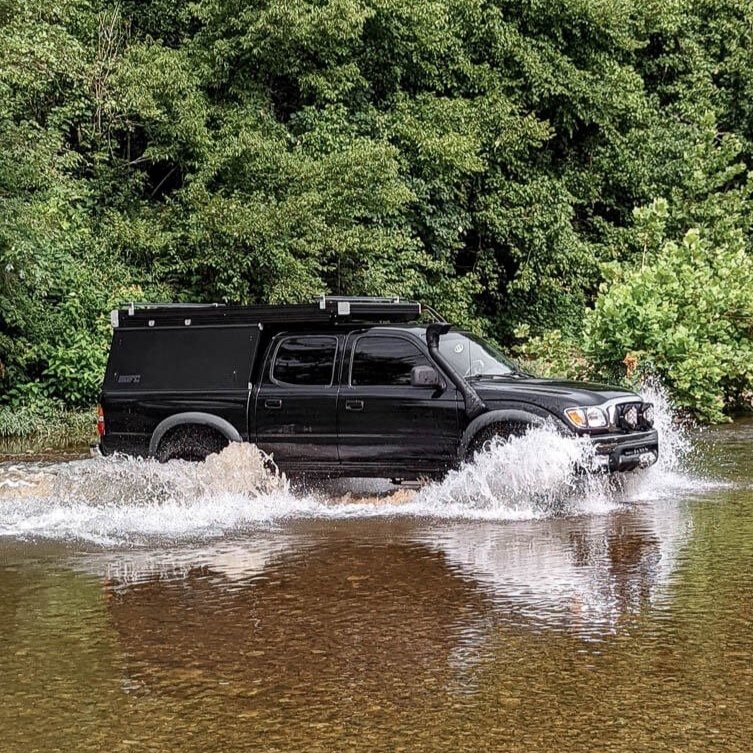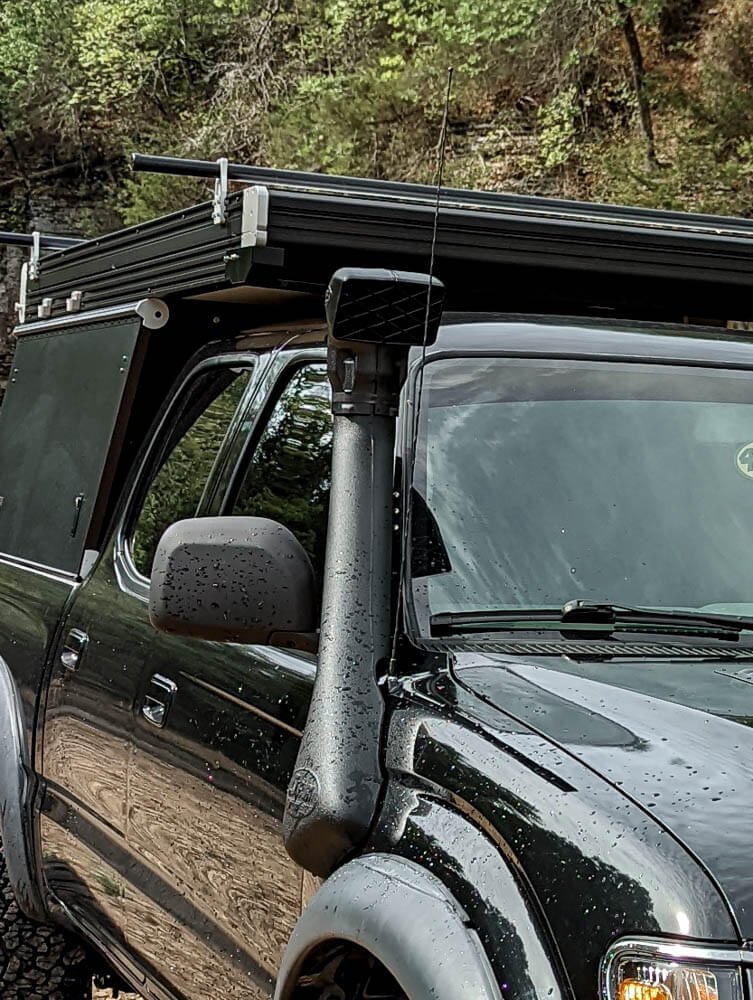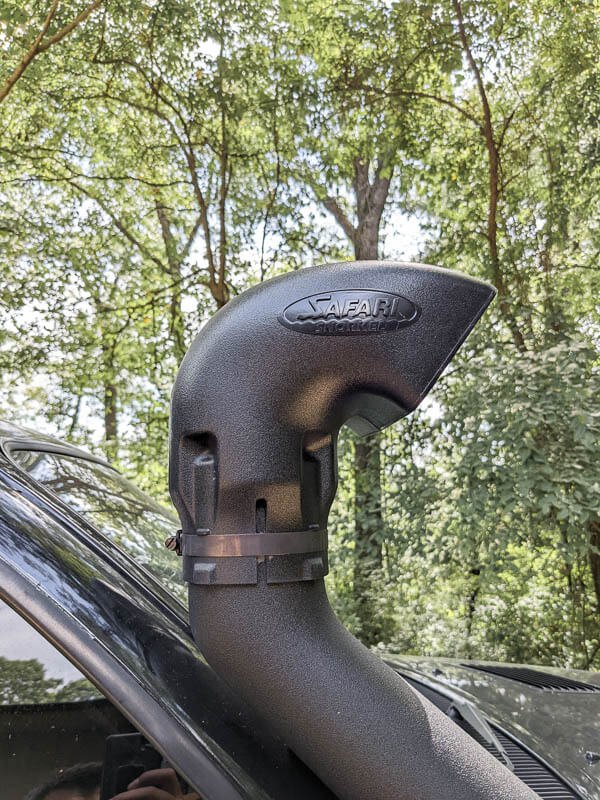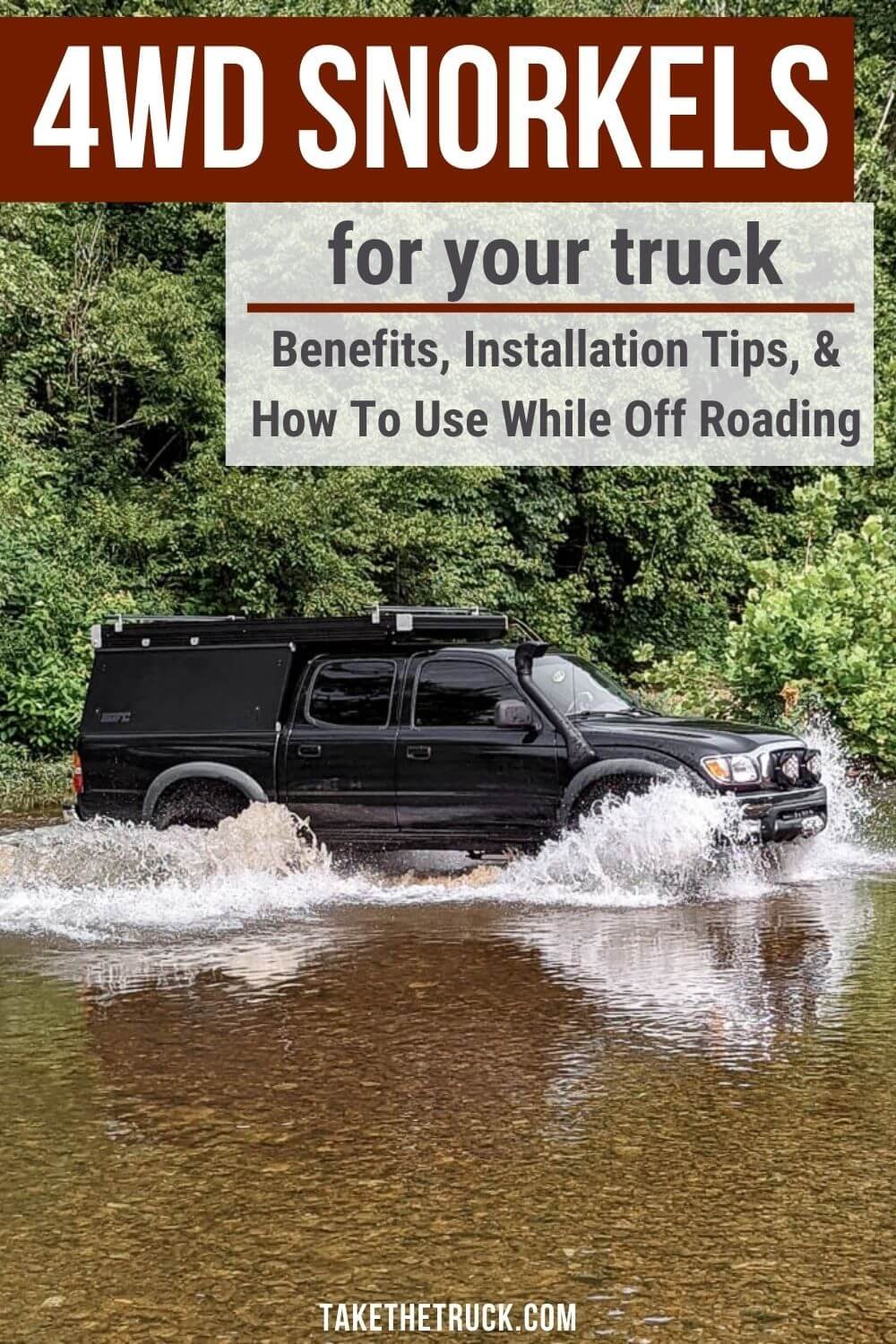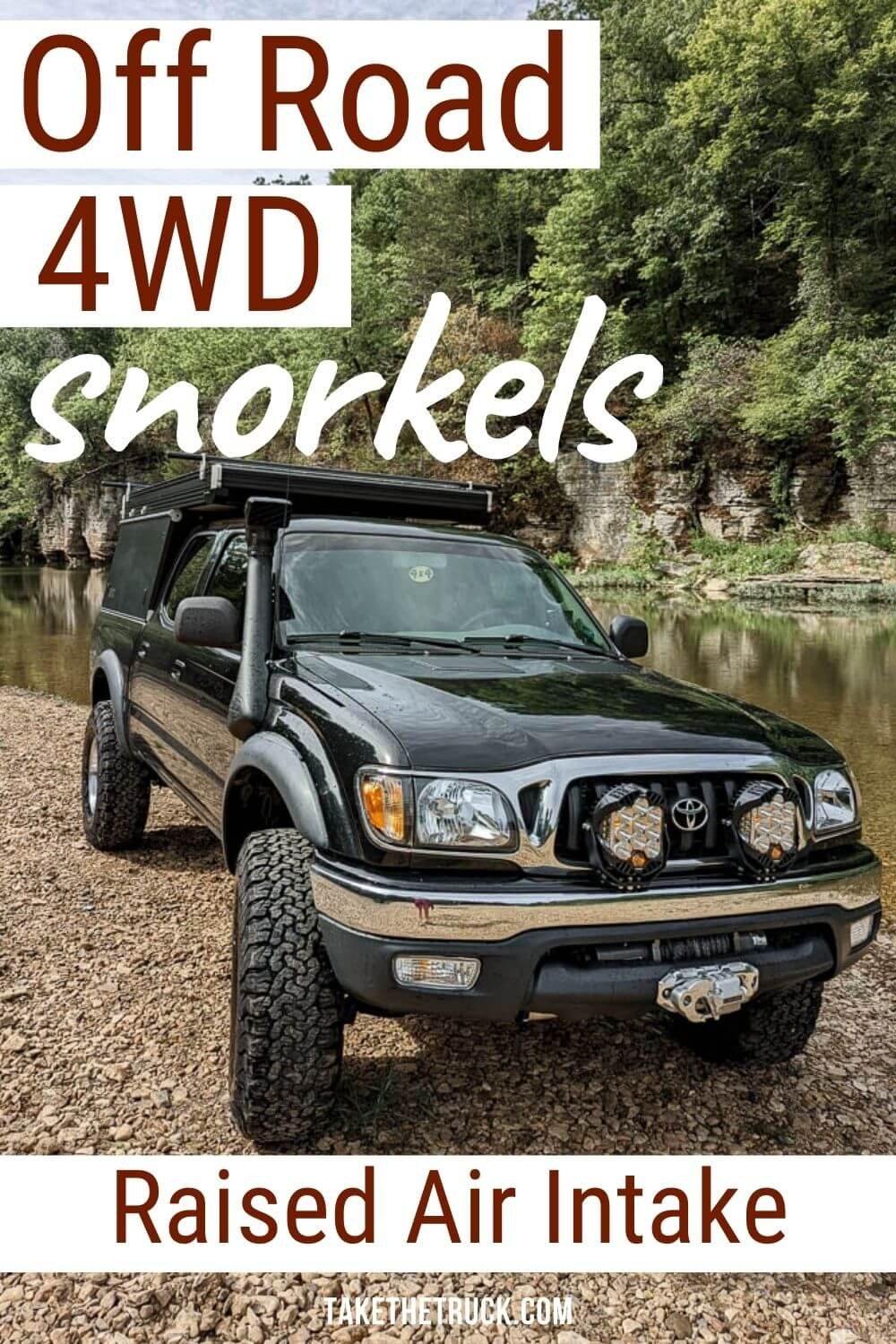Everything You Need to Know About Off Road 4x4 Snorkels
What is an Off Road Snorkel?
An off road 4x4 snorkel, or raised air intake, elevates the location that your car, truck, or SUV drafts air into the engine where it is then mixed with fuel for combustion in the cylinders.
Factory air intakes are typically placed in an area of the vehicle’s engine bay or fender well that is relatively low. This can lead to excessive dust, debris, or water being sucked into the intake, causing premature failure of the air filter or (in the case of water) potentially catastrophic engine damage.
Installing a raised air intake is one of the best ways to protect your vehicle from these issues while driving off road, and in this post we’ll share everything you need to know to select, install, and use an off road 4x4 snorkel on your overland vehicle.
Benefits of an Off Road 4x4 Snorkel
Cleaner Air
Though it's most commonly perceived to be primarily for deep water crossings, a 4x4 snorkel’s main benefit is raising your 4wd vehicle’s air intake high above the road surface (where the majority of the dust concentration occurs).
When dirt and dust particles are stirred up by your vehicle, especially when fast moving on dirt or silt, the greatest amount of these particulates settle in the air only a few feet above the road surface, which is exactly where the factory air intake is typically located. A well-designed and installed raised air intake system like an off road snorkel will lift the air inlet above the majority of this dust and debris.
The below video provides a side-by-side comparison of two off road vehicles’ air filters; one has the stock air intake and the other has a 4x4 snorkel providing a raised air intake.
Cooler Air
Along with providing cleaner air, a 4x4 snorkel also provides cooler air to the engine. This cooler air entering the combustion chamber is more dense and thus provides a moderate improvement in power and can even increase the fuel efficiency of your overland vehicle.
Safer Water Crossings
The 4x4 snorkel (raised air intake) is a requirement for truly deep water fords. Many cars, trucks, and SUVs will begin ingesting water at even bumper height crossings. Because water does not compress like air does, even a small amount of water drawn into the engine’s combustion chamber can lead to damage. When properly fitted and sealed, an off road snorkel will draw air from closer to the roof line, well above a typical water crossing depth.
Note that raising the air intake with a 4x4 snorkel is just one component of safely fording deep water crossings in your overland vehicle. You must also:
Waterproof the Ignition System: Gasoline (Petrol) engines require the high voltage ignition system to be water-sealed to be capable of fording the same depth of water that a 4x4 snorkel allows. Modern non-carbureted distributorless ignitions (a.k.a. coil packs), are pretty well water sealed. Newer trucks and SUVs, like Jeeps and Tacomas, all use this coil-on-plug design, which is far superior to a distributor.
Raise the Differential and Gearbox Breathers: Differential and gearbox breathers should be extended and raised to prevent water from getting into the gear oil and potentially damaging these critical components. Extend the lines to the highest point in the engine bay or other elevated dry location on the vehicle.
Never attempt crossing water that is too deep (always check depth before crossing): a general rule of thumb is to never cross standing water that is over hood height, and avoid crossing fast moving water exceeding the vehicle's axle height.
*(This post contains affiliate links. This means we may receive a small commission, at no additional cost to you, if you make a purchase through a link. See our full disclosure.)
Choosing The Best Off Road 4x4 Snorkel For Your Overland Vehicle
There are a wide variety of off road snorkels on the market, and most are made specific to your year, make, and model of car, truck, or SUV so that they easily attach to the factory air intake and match your vehicle’s body shape and styling.
ARB Safari Snorkel* - The Safari 4x4 Snorkel is essentially the gold standard of off road snorkels, and was the first raised air intake designed specifically for use as a 4wd snorkel, using higher quality UV stable polyethylene in the body and heavy duty EPDM molded rubber ducting.
It was designed for the extremes of the Australian outback and has been put to the test on vehicles around the world over the last 40+ years. It’s what we use on our overland truck (pictured above) and what we highly recommend to others interested in adding a 4x4 snorkel for their off road travels.
Off-Brand Snorkels - If you’re on a budget, there are a multitude of off-brand 4x4 snorkels on the market to fit your car, truck, or SUV. Simply search “[your vehicle year, make, model] Snorkel Kit” on amazon or ebay and find one that fits your budget. Just know that the quality of materials will be significantly less, the plastics used may degrade faster, and the fit and finish may not be as precise.
How to Install a 4x4 Snorkel on Your Car, Truck, or SUV
The Safari 4x4 Snorkel comes with excellent instructions including clear installation drawings and a detailed component list that’s specific to your vehicle. While each 4x4 snorkel install will vary depending on the year, make, and model of vehicle it’s designed for, the below installation guide (performed on our 2004 Toyota Tacoma) will give you a general idea of the process and what you can expect:
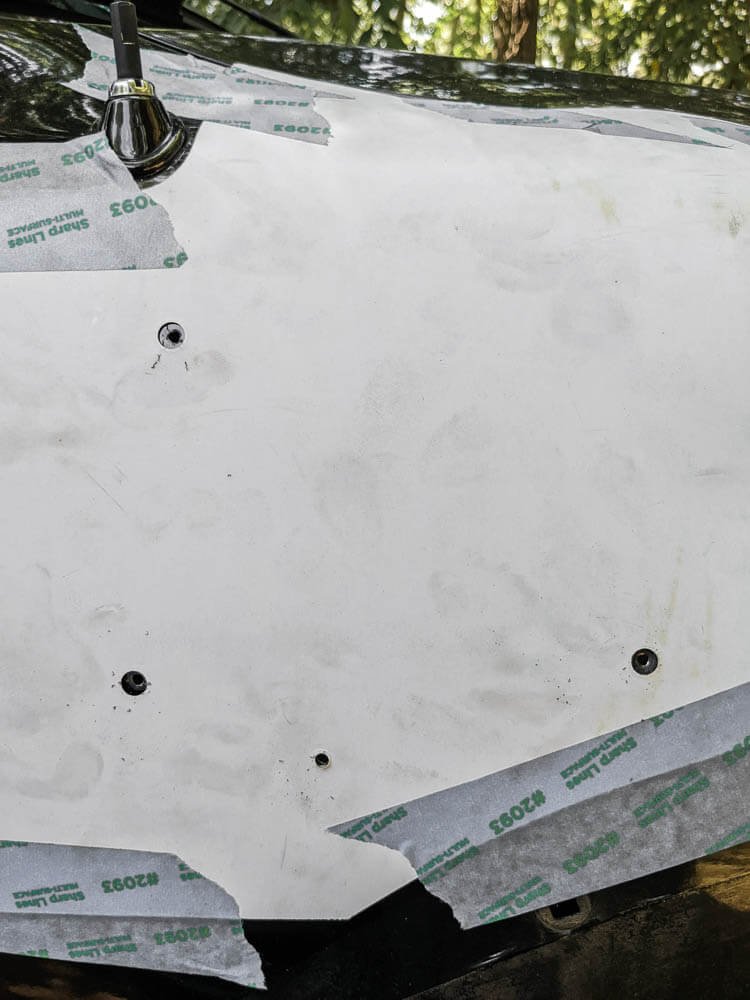

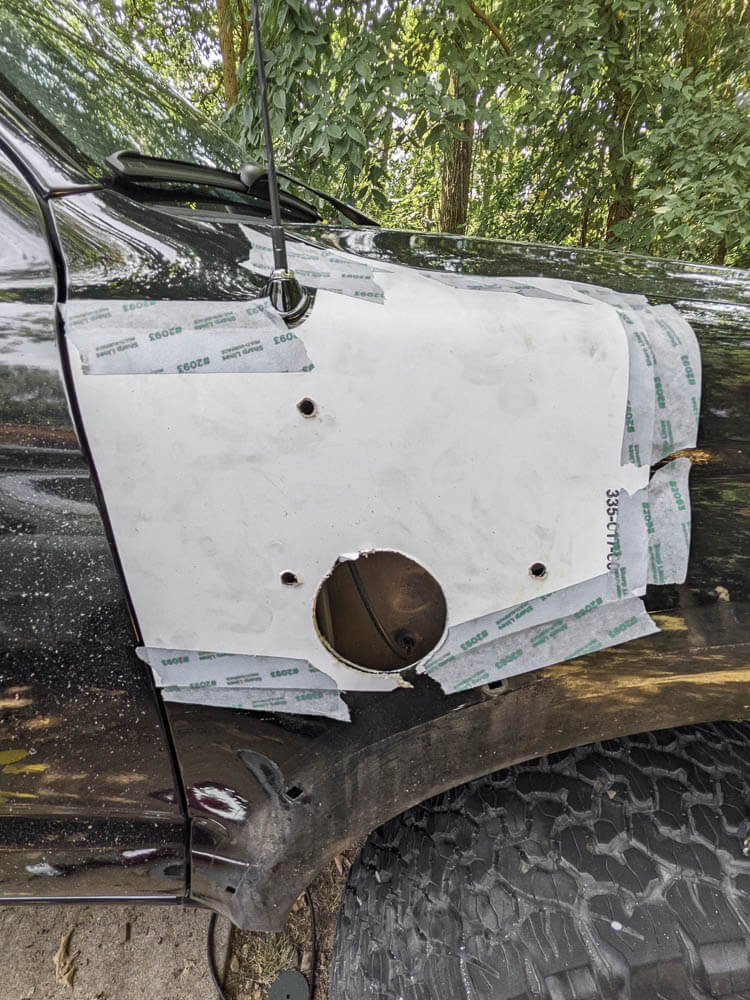
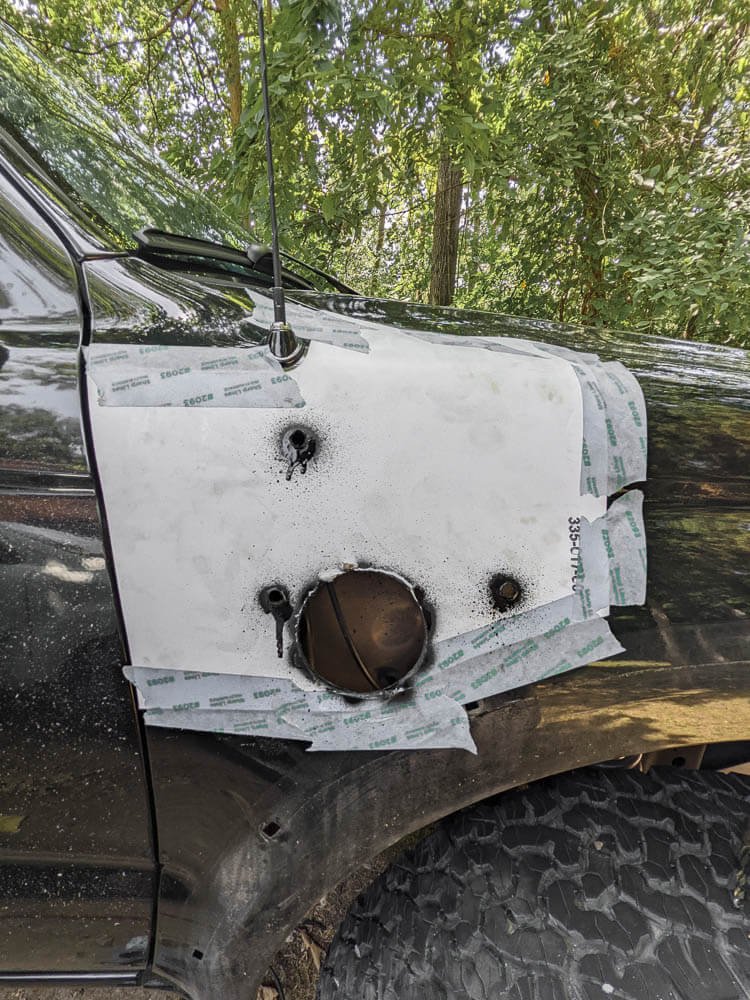



Remove Fender Flares (if equipped)
Remove Fender Liner (and antenna if applicable)
Affix template to the body of your vehicle with painter’s tape, using the body lines as a guide to position the template in the correct location outlined in the supplied directions.
Drill the mounting stud and air inlet holes at the indicated locations on the template.
Thread the three stainless steel mounting studs into the snorkel body's threaded inserts.
Mount the pillar bracket to the snorkel using the supplied hex bolts and temporarily put the snorkel onto your vehicle and into position. Mark the vehicle’s A-pillar at the mounting hole locations on the pillar bracket. Then remove the snorkel from your truck.
Using a center punch to ensure proper alignment, drill the three marked holes. It is critical that these holes be centered properly on the A-pillar.
Deburr the holes in the body and A-pillar and apply paint to prevent rust.
Insert the plastic body clips into the A-pillar holes.
Put the snorkel up to the truck and fasten the lower mounting stud using the supplied hardware. Then mount the pillar bracket to the truck using the supplied screws.
The snorkel is now in its final position - time to fasten the remaining studs to the vehicle’s fender. This is the most challenging process of the install as you will need to fit both the washer and nuts onto the studs way up in the fender well. Tip: Once the nut is started, a 12-18 long ¼” drive extension with a swivel socket was helpful in reaching the higher studs in the tighter locations.
Seal the intake system: This step is the most critical in ensuring water tightness of the system. Remove the stock air ducting and air cleaner assembly and treat all connection points with a sensor safe sealant (like Permatex RTV silicone sealant*, labeled sensor safe). Reassemble the stock air intake system, but do not remount the air entry tube just yet.
The snorkel's flexible air entry hose should be fitted loosely with the supplied hose clamps, with the clamps positioned so that they can be tightened when attached to the snorkel and intake tube. Attach the hose to the intake tube first but do not tighten. Next attach the hose to the snorkel body. Re-mount the factory intake tube to its bracket.
The last steps required are to reattach the radio antennae (if removed for install), reinstall the inner fender liner, and reinstall the fender flare. The snorkel head should be fitted to the body of the off road snorkel and secured with the supplied black hose clamp.
Congrats, you now have a 4x4 snorkel installed on your vehicle to raise your air intake above the dust and water!
How to Use Your 4x4 Snorkel
There is not a lot of maintenance needed once you’re 4x4 snorkel is installed. However, If you’re planning to use the factory ram air intake head on your snorkel, instead of a pre-cleaner (more on this below), there are some extra steps to take into consideration depending on the terrain, weather, and/or road conditions.
Propper Positioning of the Ram Air Intake Head on Your 4x4 Snorkel
Under normal on-pavement driving conditions, the snorkel head should be positioned forward facing (towards the front of the vehicle). This will ensure the highest air flow rate to the engine, providing increased power and efficiency.
For dusty or inclement weather conditions, such as heavy rain or snow, the snorkel head should be positioned rear facing (towards the back of the vehicle) to help keep the majority of dust particles, water, or snow from being driven into the vehicle’s intake.
Using a Snorkel with a Pre-cleaner (discussed in more detail below): if a pre cleaner is installed on your snorkel instead of the ram air intake (as shown in the last image above), no repositioning is required, regardless of weather or road conditions.
Watch Out for Low Hanging Branches
The snorkel head can be more easily caught on low hanging branches on tight trails - turning the snorkel head rear facing can help in these situations but care must still be taken to ensure branches do not get hung on the 4x4 snorkel’s body potentially resulting in damage to the snorkel and/or vehicle’s body.
Off Road 4x4 Snorkel Pre Cleaners
What are 4x4 Snorkel Pre-Cleaners?
Cyclonic filters and Pre-cleaners offer an additional form of protection for the raised air intake on your 4x4 snorkel, by replacing the standard ram-air head intake with a secondary filtration head helping to filter out dust, debris, bugs, snow, and rain.
They were initially designed for use on the raised air intakes of mostly stationary machinery and slow moving implements, such as farm tractors, to prevent dust, debris, rain, or snow from entering the raised air intake. At these slow speeds (below 40mph) traditional cyclonic intake filters are very effective, but they can be far less useful at the higher speeds most vehicles travel at.
The suction created at higher speeds reduces the pre-cleaner’s cyclonic effect, and when used at highway speeds (above 50mph) can result in improper fuel mixture or even create a vacuum, cutting off airflow to the engine, resulting in power loss or potential engine damage.
However, now there are cyclonic filters and pre-cleaners designed for a variety of off road 4x4 snorkels that can offer cleaner intake air for your car, truck, or SUV without the same impact to performance. Below are the three best options for upgrading your 4x4 snorkel with a pre-cleaner:
The Best Snorkel Pre-Cleaners:
Sy-Klone 9000 Series Pre Cleaners for 4x4 Snorkels
Donaldson Cyclonic 4WD Snorkel Pre Cleaner
ARB 10” 4x4 Snorkel Pre Cleaner
*Note that, depending on your 4x4 snorkel’s inlet diameter, you may need adapters to fit these pre-cleaners on your 4wd snorkel.
Having an off road 4x4 snorkel on your car, truck, or SUV is one of the best ways to prep your vehicle for a variety of off road adventures and driving conditions. We hope this brief guide has helped you with selecting and installing the best 4x4 snorkel for your own overland adventures.
For more overlanding, truck camping, and family travel tips and guides be sure to SUBSCRIBE for our bi-monthly blog updates.
And as always, thanks for reading!
Related Posts:
How to Choose and Use a 4x4 Winch [Basic Winching Techniques]
How to Pack a Traveling Tool Kit for Overlanding and Off Roading
The Do Everything Overlanding Battery That May Make Dual Battery Systems Obsolete
Overlanding Off Road Radios and Emergency Communication Devices
15 of The Best Budget Overland Vehicles for Cheap Off Road Adventures
Save a Pin to Pinterest!
We’d Appreciate a Share!

